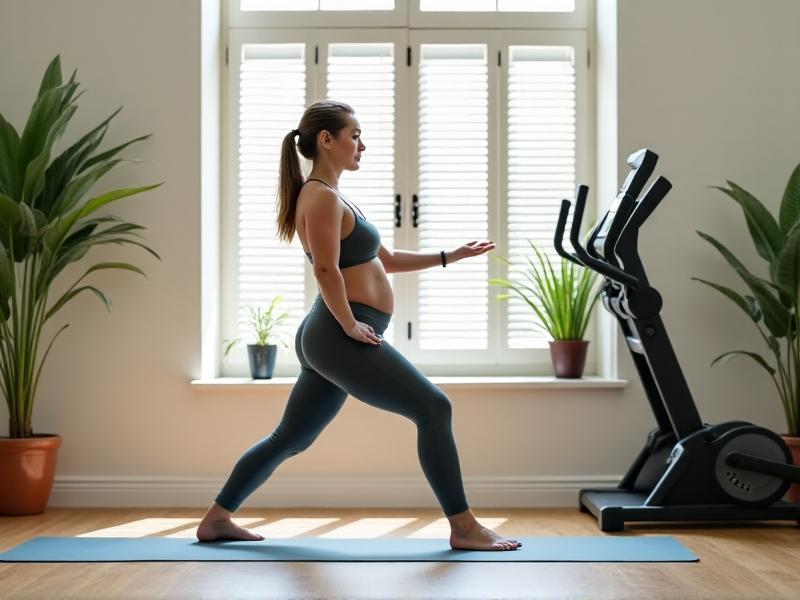Postpartum Dead Bug Modifications
Understanding Postpartum Dead Bug Modifications
Postpartum dead bug modifications refer to adaptations of the traditional "dead bug" exercise tailored for postpartum women. The dead bug exercise, a core-strengthening movement, involves lying on your back and alternately extending opposite arms and legs while maintaining a neutral spine. For postpartum women, especially those recovering from childbirth, modifications are essential to ensure safety and effectiveness.
These modifications take into account the physical changes that occur during and after pregnancy, such as diastasis recti (separation of the abdominal muscles), pelvic floor weakness, and overall core instability. By adjusting the intensity, range of motion, and support used during the exercise, postpartum dead bug modifications help women rebuild their core strength without risking injury.

The Importance of Core Strength Postpartum
Core strength is crucial for postpartum recovery, as it supports daily movements, improves posture, and reduces the risk of back pain. During pregnancy, the abdominal muscles stretch to accommodate the growing baby, often leading to weakened core muscles. After childbirth, rebuilding this strength is essential for overall physical health and well-being.
Postpartum dead bug modifications provide a safe way to re-engage the core muscles without placing undue stress on the pelvic floor or abdominal wall. These exercises help women regain control over their bodies, improve stability, and prevent long-term complications such as pelvic organ prolapse or chronic back pain.

How to Perform Postpartum Dead Bug Modifications
To perform postpartum dead bug modifications, start by lying on your back with your knees bent and feet flat on the floor. Place a small pillow or rolled-up towel under your lower back for support. Engage your pelvic floor muscles by imagining lifting them upward, and gently draw your belly button toward your spine.
Extend one leg at a time, keeping the movement slow and controlled. If you feel any strain or discomfort, reduce the range of motion or return to the starting position. As your strength improves, you can gradually increase the difficulty by extending both legs simultaneously or adding arm movements.

Common Mistakes to Avoid
One common mistake when performing postpartum dead bug modifications is arching the lower back, which can strain the spine and abdominal muscles. To avoid this, focus on maintaining a neutral spine and engaging your core throughout the exercise. Another mistake is rushing through the movements, which can reduce the effectiveness of the exercise and increase the risk of injury.
It’s also important to listen to your body and avoid pushing yourself too hard, especially in the early stages of postpartum recovery. If you experience pain or discomfort, stop the exercise and consult a healthcare professional or physical therapist for guidance.
Incorporating Postpartum Dead Bug Modifications into Your Routine
Postpartum dead bug modifications can be incorporated into a broader postpartum fitness routine to enhance overall strength and recovery. Start with 1-2 sets of 8-10 repetitions, gradually increasing the intensity as your body becomes stronger. Pair these exercises with other low-impact movements, such as pelvic tilts or gentle yoga poses, to create a well-rounded workout.
Consistency is key, so aim to perform these exercises 2-3 times per week. As you progress, you can add variations, such as using resistance bands or incorporating dynamic movements, to continue challenging your core muscles.
Benefits of Postpartum Dead Bug Modifications
The benefits of postpartum dead bug modifications extend beyond core strength. These exercises improve posture, enhance pelvic floor function, and promote overall body awareness. They also provide a safe and effective way to rebuild strength after childbirth, helping women regain confidence in their bodies.
Additionally, postpartum dead bug modifications can be tailored to individual needs, making them accessible to women at different stages of recovery. Whether you’re a new mom or several months postpartum, these exercises can play a valuable role in your fitness journey.
Seeking Professional Guidance
While postpartum dead bug modifications are generally safe, it’s always a good idea to seek professional guidance, especially if you’re new to exercise or have specific health concerns. A physical therapist or certified postpartum fitness trainer can assess your individual needs and create a personalized plan to support your recovery.
Professional guidance ensures that you’re performing the exercises correctly and safely, maximizing their benefits while minimizing the risk of injury. It also provides an opportunity to address any concerns or challenges you may face during your postpartum fitness journey.
Empowering Postpartum Recovery Through Fitness
Postpartum dead bug modifications are more than just an exercise—they’re a tool for empowerment. By taking control of your physical recovery, you’re not only rebuilding your strength but also nurturing your mental and emotional well-being. These exercises remind you that your body is capable of incredible resilience and transformation.
As you incorporate postpartum dead bug modifications into your routine, celebrate the small victories along the way. Whether it’s completing an extra repetition or noticing improved posture, each step forward is a testament to your strength and determination. Remember, postpartum recovery is a journey, and every effort you make brings you closer to your goals.







